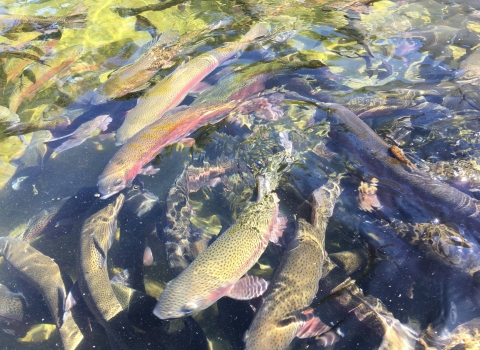The U.S. Fish and Wildlife Service today opened a 90-day public comment period to update information on the status of 25 species protected under the Endangered Species Act in Arizona, New Mexico, Oklahoma and Texas. The reviews ensure the species are accurately classified as threatened or endangered.
To accomplish the reviews, the Service is seeking any new information produced since the original listing for each species. The comment period closes July 20, 2006.
Each review will result in a recommendation to maintain or change species classification, as well as in identification of information needs for subsequent 5-year reviews. Any change in Federal classification requires a separate rule-making process distinct from the status review.
Under the Endangered Species Act, the Service maintains a list of endangered and threatened wildlife and plants. The Act requires that the Service reviews listed species at least once every five years and determines whether or not any species should be removed from the list (delisted), or reclassified from endangered to threatened or from threatened to endangered. Delisting a species must be supported by the best scientific and commercial data available and only considered if such data substantiates that the species is neither endangered nor threatened because the species is considered extinct; the species is considered to be recovered; or the original data, or its interpretation, were in error.
To ensure that the review is as thorough as possible, the Service is soliciting new information about these species from the public, concerned governmental agencies, Tribes, the scientific community, industry, environmental entities and any other interested parties. The Federal Register notice includes contact information and indicates where comments on each species should be sent. The notice is available on the internet at: http://www.gpoaccess.gov/fr/. Use the browse function to find the April 21 issue.
Categories of requested information include:
Species biology, including population trends, distribution, abundance, demographics, and genetics.
Habitat conditions, including amount, distribution, and suitability.
Conservation measures that have been implemented that benefit the species.
Threat status and trends.
Other new information, data, or corrections, including taxonomic or nomenclatural changes, identification of erroneous information, and improved analytical methods.
Threatened or endangered animal species included in this review are Golden-cheeked Warbler, Houston Toad, Government Canyon Bat Cave Spider, Robber Baron Cave Meshweaver, Government Canyon Bat Cave Meshweaver, Madla's Cave Meshweaver, Braken Bat Cave Meshweaver, Cokendolpher Cave Harvestman, Helotes mold beetle, Ground Beetle (Rhadine exilis), Ground Beetle (Rhadine infernalis), Jaguar, Apache Trout, Desert Pupfish, Sonora Tiger Salamander, Ozark Big-eared Bat, Leopard Darter and Pecos Bluntnose Shiner.
Listed plants included in this review are Cochise Pincushion Cactus, Peebles Navajo Cactus, Siler Pincushion Cactus, Slender Rush-pea, Black Lace Cactus, Todsen's Pennyroyal and Sacramento Prickly Poppy.
The U.S. Fish and Wildlife Service is the principal Federal agency responsible for conserving, protecting and enhancing fish, wildlife and plants and their habitats for the continuing benefit of the American people. The Service manages the 95-million-acre National Wildlife Refuge System which encompasses 544 national wildlife refuges, thousands of small wetlands and other special management areas. It also operates 69 national fish hatcheries, 63 fishery resource offices and 81 ecological services field stations. The agency enforces Federal wildlife laws, administers the Endangered Species Act, manages migratory bird populations, restores nationally significant fisheries, conserves and restores wildlife habitat such as wetlands, and helps foreign governments with their conservation efforts. It also oversees the Federal Aid program that distributes hundreds of millions of dollars in excise taxes on fishing and hunting equipment to State fish and wildlife agencies.


